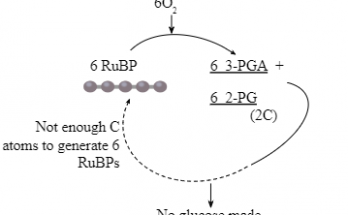Phloem
The Phloem is a type of plant Tissue that is responsible for the transport of organic nutrients and other important substances from the leaves to the other parts of the plant. This process is known as Translocation and is an essential part of the plant’s growth and development.Unlike the Xylem, which transports water and minerals from the roots to the leaves. The Phloem can transport nutrients in any direction.

Phloem Diagram – Longitudinal Section Diagram of Phloem Tissue
A Phloem Longitudinal section Diagram shows a Cross-Section of the Phloem Tissue. In this type of Diagram, the Tissue is shown cut lengthwise, revealing the internal structure of the Phloem Tissue.
The Diagram typically shows the different types of cells that make up the Phloem Tissue including Sieve tubes, Companion Cells, Phloem fibers and Phloem Parenchyma cells. Phloem Longitudinal section Diagram is a useful tool for understanding the internal structure of the Phloem Tissue and how it facilitates the movement of organic compounds within the plant.

Phloem Diagram – Transverse Section Diagram of Phloem Tissue
A Phloem Transverse section Diagram shows a cross-section of the Phloem Tissue at a right angle to the axis of the plant. This type of Diagram typically shows the different types of cells that make up the Phloem Tissue including Sieve tubes, Companion Cells, Phloem fibers and Phloem Parenchyma Cells. Phloem Transverse section Diagram is a useful tool for understanding the internal structure of the Phloem Tissue and how it facilitates the movement of organic compounds within the plant in a direction perpendicular to the axis of the plant.

The Phloem Tissue is composed of several types of cells including Sieve tube elements, Companion Cells, Phloem Fibers and Phloem Parenchyma Cells.
Also Check – Functions of the Xylem and Phloem
Description of Phloem Diagram labels is as follows –
- Phloem Parenchyma – These are the least specialized cells of the Phloem and are responsible for storing and metabolizing nutrients.
- Companion Cells – These cells are located adjacent to the Sieve tubes and are responsible for providing energy to the Sieve tubes to maintain the pressure gradient required for nutrient transport.
- Nucleus of Parenchyma – This refers to the nucleus of the Phloem Parenchyma cells, which are responsible for storing and metabolizing nutrients.
- Sieve Plates – These are the end walls of the Sieve elements, which are perforated with pores that allow the movement of nutrients.
- Sieve Cells – These are elongated, thin-walled cells that make up the Sieve tubes and are responsible for transporting nutrients.
- Sieve Tube – This is the main transport cell of the Phloem and is made up of a series of Sieve cells arranged end-to-end to form a long tube.
- Ground Tissue Cell – This refers to any other cell type that is not part of the Phloem or Xylem Tissues.
- Nucleus – This refers to the nucleus of any of the cells depicted in the Diagram, which contains the genetic material and controls the cell’s activities.
Also Check – What are the Differences between the Transport of Materials in Xylem and Phloem
Also Check – What are the Components of Transport System in Highly Organised Plants
Also Check – Xylem – Definition , Structure, Components (Types), Functions And Importance

8 Comments on “Phloem Diagram – Longitudinal and Transverse Section Diagram of Phloem Tissue”